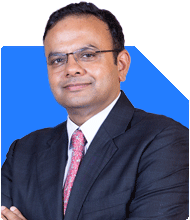Ramalingam Kalirajan |10905 Answers |Ask -Follow
Mutual Funds, Financial Planning Expert - Answered on Apr 27, 2024
He has an MBA in finance from the University of Madras and is a certified financial planner.
He is the director and chief financial planner at Holistic Investment, a Chennai-based firm that offers financial planning and wealth management advice.... more

i want to open in mutual fund nfo.which will be better for me. canara robecco manufacturing fund or Edelweiss technology fund i already have 10k in ratia 5:3:2 in zerodha elss taxsaver nifty large midcap 250index,quant infrastructure fund,aditya birla sunlife psu equity fund
Canara Robeco Manufacturing Fund: This fund focuses on investing in companies operating in the manufacturing sector. It aims to capitalize on the growth potential of manufacturing companies and may be suitable if you're bullish on the manufacturing sector's prospects. However, it's essential to assess the fund's investment strategy, track record, and the outlook for the manufacturing sector before investing.
Edelweiss Technology Fund: This fund focuses on investing in technology-related companies, which may include IT services, software, hardware, and internet companies. It aims to benefit from the growth potential of the technology sector, which has been experiencing rapid innovation and expansion. If you believe in the long-term growth prospects of the technology sector, this fund may align well with your investment objectives.
Considering your existing investments in ELSS, index funds, and infrastructure funds, adding exposure to a specific sector like manufacturing or technology can provide additional diversification to your portfolio. However, it's essential to evaluate the concentration risk and ensure that the sectoral allocation complements your overall investment strategy.
Before investing in any NFO, thoroughly research the fund's objectives, investment strategy, fund manager's track record, and expense ratio. Additionally, consider consulting with a Certified Financial Planner to assess how the NFO fits into your overall investment portfolio and whether it aligns with your financial goals and risk profile.
Remember to stay focused on your long-term investment objectives and avoid making investment decisions solely based on short-term market trends or NFO hype. Diversification, thorough research, and disciplined investing are key to building a successful investment portfolio over time.
You may like to see similar questions and answers below
Abhishek Dev | Answer |Ask -Follow
Financial Planner - Answered on Aug 26, 2023
Ramalingam Kalirajan |10905 Answers |Ask -Follow
Mutual Funds, Financial Planning Expert - Answered on May 30, 2024
Ramalingam Kalirajan |10905 Answers |Ask -Follow
Mutual Funds, Financial Planning Expert - Answered on Aug 21, 2024
Ramalingam Kalirajan |10905 Answers |Ask -Follow
Mutual Funds, Financial Planning Expert - Answered on Jul 10, 2024
Reetika Sharma |432 Answers |Ask -Follow
Financial Planner, MF and Insurance Expert - Answered on Sep 18, 2025
Nayagam P P |10859 Answers |Ask -Follow
Career Counsellor - Answered on Dec 19, 2025
Ramalingam Kalirajan |10905 Answers |Ask -Follow
Mutual Funds, Financial Planning Expert - Answered on Dec 19, 2025
Ramalingam Kalirajan |10905 Answers |Ask -Follow
Mutual Funds, Financial Planning Expert - Answered on Dec 19, 2025
Ramalingam Kalirajan |10905 Answers |Ask -Follow
Mutual Funds, Financial Planning Expert - Answered on Dec 19, 2025
Radheshyam Zanwar |6751 Answers |Ask -Follow
MHT-CET, IIT-JEE, NEET-UG Expert - Answered on Dec 19, 2025
Radheshyam Zanwar |6751 Answers |Ask -Follow
MHT-CET, IIT-JEE, NEET-UG Expert - Answered on Dec 19, 2025
Samraat Jadhav |2514 Answers |Ask -Follow
Stock Market Expert - Answered on Dec 18, 2025
Reetika Sharma |432 Answers |Ask -Follow
Financial Planner, MF and Insurance Expert - Answered on Dec 18, 2025
Reetika Sharma |432 Answers |Ask -Follow
Financial Planner, MF and Insurance Expert - Answered on Dec 18, 2025
Reetika Sharma |432 Answers |Ask -Follow
Financial Planner, MF and Insurance Expert - Answered on Dec 18, 2025


























